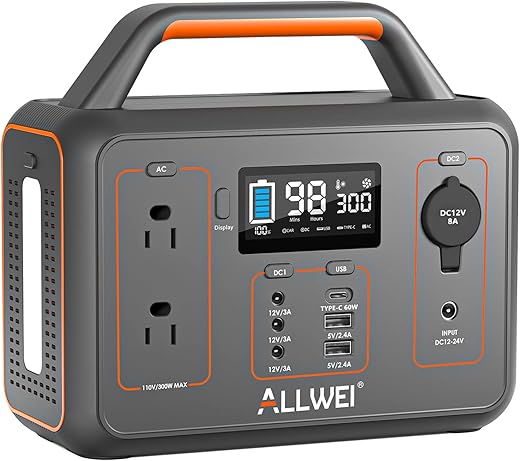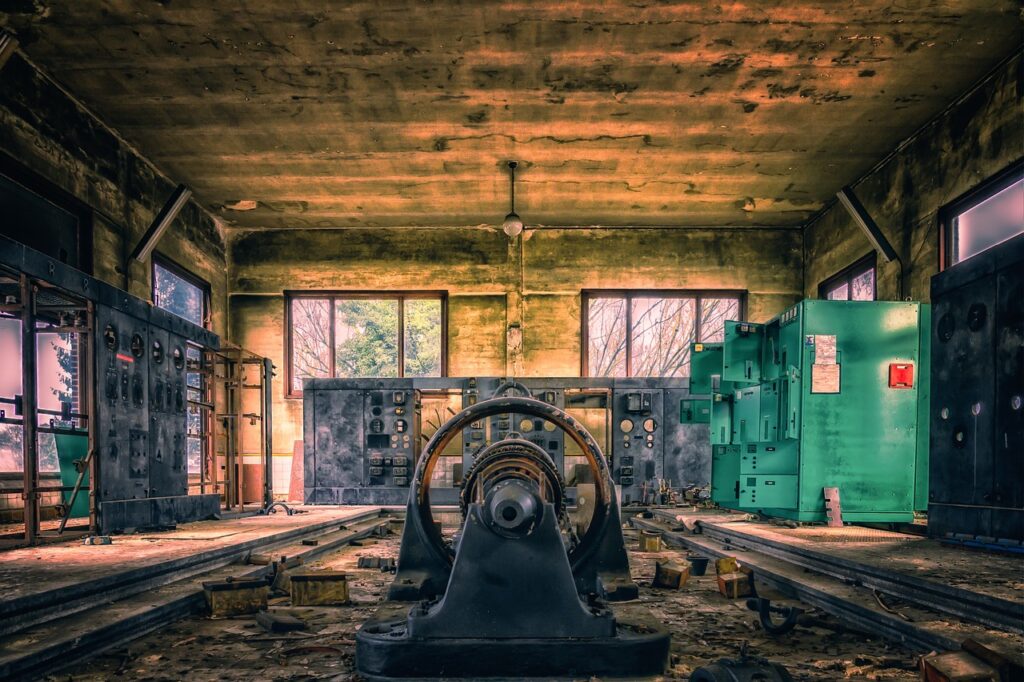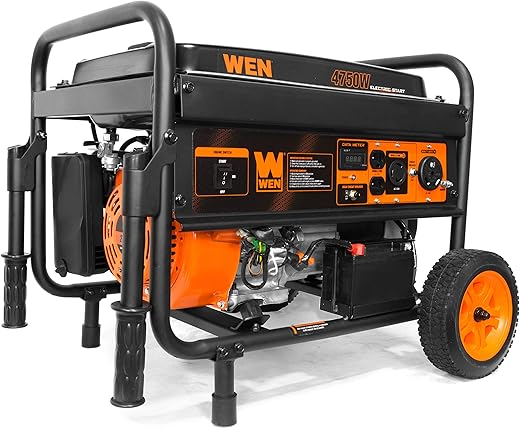When it comes to preparing for unexpected power outages or planning for outdoor adventures, the choice of generator can make all the difference. I understand how daunting it can be to sift through various options, especially with so much at stake in terms of reliability and performance. In this blog post, I will explore the key differences between inverter generators and conventional generators, highlighting their features, advantages and disadvantages, and the specific applications where each shines. My goal is to provide you with the information you need to make an empowered and informed decision that best suits your unique needs. Let’s dive in and discover which option could be the ideal backup power solution for you.
What are Inverter Generators?
Inverter generators are a sophisticated type of portable generator designed to provide a stable and reliable source of electricity. Unlike traditional generators, which produce a fluctuating voltage output, inverter generators utilize advanced technology to convert and regulate the voltage. This process allows them to produce clean, stable power that is compatible with sensitive electronic devices.
How Inverter Generators Work
The core of an inverter generator’s technology lies in its ability to convert and modify the electrical output. Here’s a breakdown of the operation:
- Power Generation: Inverter generators produce electricity using a gasoline or propane engine, similar to conventional generators.
- AC to DC Conversion: The generated alternating current (AC) is then transformed into direct current (DC) using an internal rectifier.
- DC to Clean AC Output: This DC electricity is subsequently converted back into a stable, sine-wave alternating current (AC). The sine wave produced by inverter generators closely mirrors the power supplied by utility companies, allowing it to be safe for sensitive electronics.
- Voltage Regulation: Inverter generators continuously adjust the engine speed based on the electrical load demand. This results in efficient fuel consumption and minimizes noise pollution, as the engine runs only as fast as needed.
Benefits of Inverter Generators
Inverter generators offer numerous advantages over traditional generators, making them appealing for various applications:
- Clean Power Output: The regulated sine wave output is suitable for sensitive devices such as laptops, smartphones, and medical equipment.
- Quiet Operation: Many inverter generators operate at lower decibel levels, making them ideal for settings where noise is a concern.
- Portability: Typically lighter and more compact than conventional generators, inverter generators are easy to transport.
- Fuel Efficiency: Their demand-responsive engine speeds result in reduced fuel consumption, thereby extending runtime.
Popular Brands and Models
There are several reputable brands and models to consider when looking for an inverter generator. Here are a few notable examples:
- Honda EU2200i
- Power Output: 2,200 watts (surge), 1,800 watts (rated)
- Runtime: Up to 8.1 hours on a 0.95-gallon tank
- Noise Level: 48 to 57 dBA
- Ideal for camping and recreational use due to its portability and quiet operation.
- Yamaha EF2200iS
- Power Output: 2,200 watts (surge), 1,800 watts (rated)
- Runtime: Up to 10.5 hours on a 1.2-gallon tank
- Noise Level: 57 dBA
- Known for its durability and fuel efficiency, making it suitable for job sites and outdoor events.
- Champion 2000-Watt Portable Inverter Generator
- Power Output: 2,000 watts (surge), 1,700 watts (rated)
- Runtime: Up to 11.5 hours on a 1-gallon tank
- Noise Level: 53 dBA
- Well-regarded for its affordability and lightweight design, perfect for tailgating and camping.
Applications of Inverter Generators
Inverter generators excel in a variety of applications, making them a versatile choice for both recreational and emergency power needs:
1. Camping
Inverter generators provide a reliable source of electricity for camping trips, allowing you to power lights, small appliances, and charging devices without disturbing the tranquility of nature. Models like the Honda EU2200i are especially popular among outdoor enthusiasts for their quiet performance.
2. Tailgating
Before a big game, inverter generators enable tailgaters to power grills, speakers, and even televisions. The compact size and easy portability of units such as the Champion 2000-Watt can fit comfortably in your vehicle, making it convenient for on-the-go power.
3. Home Backup
In case of an electrical outage, inverter generators serve as an effective backup power source, providing electricity for essential household items. Yamaha’s EF2200iS can back up critical appliances like refrigerators and security systems, ensuring your home remains functional during emergencies.
In summary, inverter generators represent a significant advancement in portable power technology. Their clean, stable electricity, quiet operation, and versatility make them a valuable investment for anyone in need of reliable power for sensitive electronics and various outdoor activities.
What are Conventional Generators?
Conventional generators are robust power sources designed for demanding applications, such as construction sites, outdoor events, and residential backup during power outages. Unlike inverter generators, which provide cleaner and quieter power suitable for sensitive electronics, conventional generators excel in delivering high power output efficiently, making them an ideal choice for heavy-duty tasks.
Operational Mechanism of Conventional Generators
Conventional generators work on a straightforward principle of electromagnetic induction. Essentially, they convert mechanical energy into electrical energy through the following steps:
- Internal Combustion Engine: This is the heart of a conventional generator, usually powered by gasoline, diesel, or propane. The combustion engine generates mechanical energy.
- Alternator: The mechanical energy produced by the engine drives the alternator, which contains rotating magnets and stationary coils. As the magnets turn, they induce current in the coils, converting mechanical energy into electric energy.
- Output Distribution: The generated electricity is then channeled through a control panel and distributed as required.
Conventional generators are unparalleled in their capability to deliver sustained power in high-demand situations. Popular models such as the Generac GP8000E offer up to 8,000 watts of continuous power, allowing them to run heavy appliances, power tools, and more.
Higher Power Output for Heavy-Duty Applications
One of the standout features of conventional generators is their impressive power output. Here are some points to consider:
- Power Capacity: Many conventional generators can produce between 3,000 to 15,000 watts. This capacity enables them to accommodate multiple high-wattage devices simultaneously, making them suitable for construction sites or large events.
- Applications: Ideal for powering heavy machinery, air compressors, construction tools, and even home essentials (like refrigerators and HVAC systems) during outages. For example, the Honda EB10000 can run essential home appliances simultaneously, keeping your household functional during an emergency.
- Example of Usage: On a construction site, equipment such as concrete mixers and saws often require heavy power. Conventional generators like the Champion Power Equipment 100263 can handle these loads with ease.
Noise Levels and Fuel Consumption
When it comes to noise and fuel consumption, conventional generators generally present some drawbacks compared to inverter models:
- Noise Levels: Conventional generators tend to produce significant noise during operation. For instance, the DuroMax XP12000EH can emit noise levels reaching approximately 72 dB, which is comparable to a vacuum cleaner. Although some users may find this acceptable for outdoor tasks, it’s crucial to be aware of local noise ordinances, especially for residential use.
- Fuel Consumption: These generators are not as fuel-efficient as inverter models. High-output engines consume more fuel, particularly under heavy loads. For example, while a model like the Westinghouse WGen7500 may run for about 11 hours on a full tank (6.6 gallons of gasoline) at 50% load, operating at maximum capacity will significantly decrease runtime, leading to more frequent refueling.
Overall Efficiency: Conventional vs. Inverter Generators
While conventional generators have their advantages, it is essential to compare their efficiency with inverter generators:
| Feature | Conventional Generators | Inverter Generators |
|---|---|---|
| Power Output | Higher output (3,000 – 15,000 watts) | Lower output (1,000 – 4,000 watts) |
| Noise Levels | Generally loud (70 – 80 dB) | Quieter (50 – 60 dB) |
| Fuel Consumption | Less efficient, higher fuel consumption | More efficient, better fuel economy |
| Portability | Heavier and bulkier | Generally lighter and more portable |
| Power Quality | Suitable for heavy-duty tasks | Cleaner power for sensitive devices |
In Summary
Conventional generators are a solid choice for those needing substantial power for demanding applications. Their ability to deliver high output for heavy-duty tasks makes them indispensable for certain scenarios, despite some trade-offs in noise and efficiency when compared to inverter generators. They represent a reliable power solution when the situation calls for it, guaranteeing that you will have the electricity necessary to keep your operations—whether at a job site or at home—running smoothly.
Key Differences Between Inverter Generators and Conventional Generators
When it comes to selecting a generator, understanding the key differences between inverter generators and conventional generators is crucial. Each type has its own strengths and weaknesses that cater to different needs. Here, we’ll analyze essential factors like power quality, size and weight, noise levels, fuel efficiency, and cost to help you determine which generator is the right choice for you.
Power Quality
One of the most significant differences lies in the power quality produced by each generator type.
- Inverter Generators:
- Inverter generators produce clean, stable power that is safe for sensitive electronic devices such as laptops, smartphones, and medical equipment. For example, the Honda EU2200i provides a pure sine wave output, minimizing the risk of damage to delicate devices.
- These generators adjust engine speed according to the power demand, reducing voltage fluctuation.
- Conventional Generators:
- Conventional generators output power that can fluctuate, which may not be ideal for sensitive equipment. Models like the Champion 4000-Watt Portable Generator are robust for running tools and appliances but may cause disruptions to electronics.
- They operate at a consistent speed, which can lead to less efficient power usage.
| Feature | Inverter Generators | Conventional Generators |
|---|---|---|
| Power Quality | Clean, stable; sine wave | Varies; can be unsafe for electronics |
| Example Model | Honda EU2200i | Champion 4000-Watt |
Size and Weight
When it comes to mobility, size and weight matter significantly.
- Inverter Generators:
- Typically lightweight and more compact.
- For instance, the Yamaha EF2000iSv2 weighs only 44 pounds, making it easy to transport for camping or tailgating.
- Conventional Generators:
- Generally larger and bulkier.
- The DuroMax XP4850EH, for example, weighs around 120 pounds and requires a more robust setup for transport and storage.
| Feature | Inverter Generators | Conventional Generators |
|---|---|---|
| Size and Weight | Lightweight, compact | Larger, bulkier |
| Example Model | Yamaha EF2000iSv2 | DuroMax XP4850EH |
Noise Levels
Noise produced by generators can be a significant deciding factor depending on your intended use.
- Inverter Generators:
- Generally quieter, with sound levels often around 50 decibels (dBA). The Briggs & Stratton P2200 produces a low noise output, making it ideal for quiet areas or residential use.
- Ideal for camping or outdoor events where noise regulations may be in place.
- Conventional Generators:
- Tend to be noisier, often exceeding 70 dBA. Models like the Generac GP3500iO can be disruptive, especially in quiet neighborhoods or during nighttime use.
- May not be suitable for environments that require low noise levels.
| Feature | Inverter Generators | Conventional Generators |
|---|---|---|
| Noise Levels | 50 dBA | 70 dBA or more |
| Example Model | Briggs & Stratton P2200 | Generac GP3500iO |
Fuel Efficiency
Another crucial factor for consideration is fuel efficiency and runtime.
- Inverter Generators:
- More fuel-efficient due to the ability to adjust output according to demand. For example, the Kohler 2000 Watt Inverter Generator can run up to 8 hours on a single tank of gas under variable loads.
- This translates to less frequent refueling during usage.
- Conventional Generators:
- Tend to consume more fuel because of their constant running speed and inability to adjust to load. Consider the Westinghouse WGen7500, which is powerful but operates less efficiently, often requiring more frequent refueling.
- A louder engine results in more fuel consumption over time.
| Feature | Inverter Generators | Conventional Generators |
|---|---|---|
| Fuel Efficiency | High, adjustable load | Moderate to low, constant load |
| Example Model | Kohler 2000 Watt Inverter | Westinghouse WGen7500 |
Cost
Cost is often a critical consideration when purchasing a generator.
- Inverter Generators:
- Generally higher in price due to advanced technology and features. For instance, the Honda EU2200i costs around $1,200–$1,600, but this investment pays off in fuel efficiency, noise reduction, and portability.
- Ideal for users seeking quality output for sensitive equipment or those who prioritize quiet operation.
- Conventional Generators:
- Usually less expensive upfront. The DuroMax XP4850EH retails for about $500, making it a cost-effective choice for heavy-duty tasks like powering tools.
- However, users must consider additional fuel costs and noise levels over time.
| Feature | Inverter Generators | Conventional Generators |
|---|---|---|
| Cost | Higher (= $1,200 – $1,600) | Lower (= ~$500) |
| Example Model | Honda EU2200i | DuroMax XP4850EH |
Summary of Key Differences
| Aspect | Inverter Generators | Conventional Generators |
|---|---|---|
| Power Quality | Clean, stable (sine wave) | Can be unstable |
| Size and Weight | Compact and lightweight | Bulkier and heavier |
| Noise Levels | Quieter (around 50 dBA) | Noisier (70 dBA or more) |
| Fuel Efficiency | High; adjusts to load | Moderate to low; constant |
| Cost | Higher upfront; greater long-term value | Lower upfront, higher fuel costs |
Understanding these key differences will aid you in making an informed decision based on your individual needs and circumstances. Whether you need a quiet and portable solution for your camping trips, or a robust unit for power tools at a job site, knowing the pros and cons will ensure a suitable match for your requirements.
Choosing the Right Generator for Your Needs
In conclusion, the choice between inverter generators and conventional generators hinges on understanding their key differences and your unique power needs. Inverter generators are typically quieter, more fuel-efficient, and provide clean energy ideal for sensitive electronics, while conventional generators excel in delivering higher power outputs for heavy-duty applications. I recommend that readers carefully assess their specific requirements, considering factors such as portability, noise level, and power capacity, to determine which generator type best aligns with their individual use cases. Ultimately, both options offer distinct advantages tailored to different circumstances, making an informed decision crucial for optimal performance.












Can’t believe how lightweight some of these newer inverter models are. Super portable!
Inverter generators are such a game changer! So much quieter than the old-school ones.
I used to think all generators were the same until I tried an inverter. What a difference!
Conventional generators definitely have their place, but I’ve switched to inverter models for camping.
Love that inverter generators are more fuel-efficient. Saves me money in the long run!
Anyone else notice that inverter generators don’t mess with sensitive electronics? That’s a huge plus!